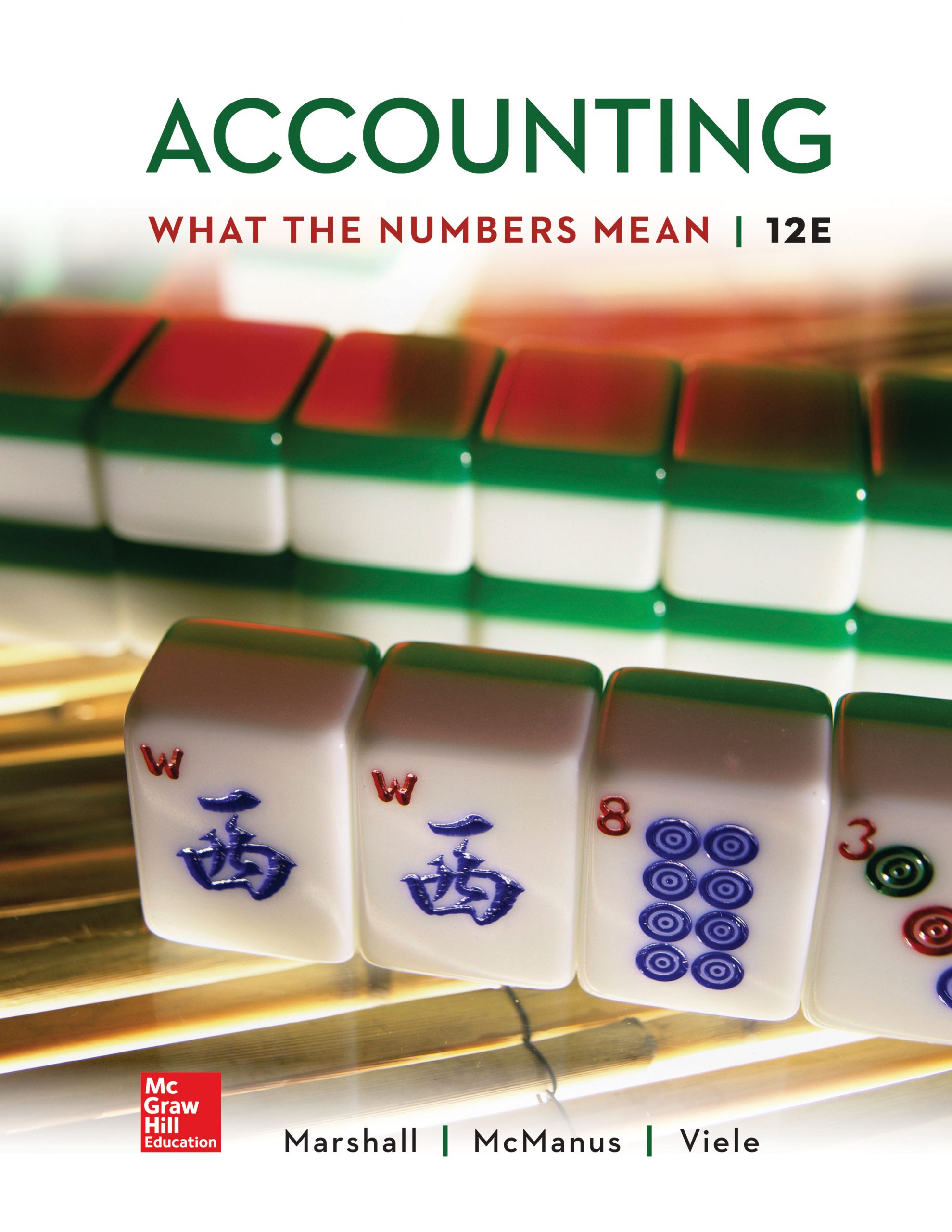Description
Test Bank For Accounting What the Numbers Mean David Marshall 12 Edition
Accounting – What the Numbers Mean, 12e (Marshall)
Chapter 3 Fundamental Interpretations Made from Financial Statement Data
1) Financial statement ratios support informed judgments and decision-making most effectively:
A) when viewed for a single year.
B) when viewed as a trend of entity data.
C) when compared to an industry average for the most recent year.
D) when the trend of entity data is compared to the trend of industry data.
2) When comparing entity financial ratios with industry ratios:
A) it should be assumed that the data result from the consistent application of alternative accounting methods.
B) relative values at a point in time may not be significant.
C) the trend of entity ratios should be compared to the current year’s industry ratio.
D) entity ratios should not be compared with industry ratios.
3) The return on investment measure of performance:
A) is never as important a measure of management effectiveness as the amount of net income.
B) relates dividends paid to the entity’s assets.
C) is calculated using net income as the amount of return.
D) is calculated by dividing average assets for a period by the amount of net income for the period.
4) Another term for return on investment is:
A) Return on equity.
B) Return on assets.
C) Return on retained earnings.
D) Return to sender.
5) The return on investment measure of performance:
A) is relevant only to business enterprises.
B) is used by individuals to compare investment performance.
C) is calculated using sales as the amount of return.
D) is calculated using total assets at the beginning of the period as the amount of investment.
6) An advantage of the DuPont model for calculating ROI is that:
A) it focuses on asset utilization as well as net income.
B) it is easier to use than the straightforward ROI formula.
C) it uses average assets and the straightforward ROI formula does not.
D) it uses average stockholders’ equity.
7) Around Square, Inc. had an ROI of 12.5%, turnover of 5.0, and sales of $8 million for the year. Around Square’s margin for the year was:
A) $1,000,000
B) 2.5%
C) 4.0%
D) $1,600,000
8) Mamba Metals, Inc. had an ROI of 12%, margin of 3%, and sales of $20 million for the year. Mamba’s turnover for the year was:
A) 3.0
B) 4.0
C) 36%
D) $600,000
9) Rotablade’s net income was $600,000 on sales of $24 million for the year. Average assets for the year were $8 million. For the year:
A) margin was 4%, turnover was 3.0, and ROI was 12%.
B) margin was 2.5%, turnover was 2.0, and ROI was 5%.
C) margin was 4%, turnover was 2.0, and ROI was 8%.
D) margin was 2.5%, turnover was 3.0, and ROI was 7.5%
10) United Machining’s margin was 2% and turnover was 3.0 on sales of $60 million for the year. On the basis on this information:
A) net income for the year was $3,600,000, average assets were $20 million, and ROI was 2%.
B) net income for the year was $1,200,000, average assets were $10 million, and ROI was 2%.
C) net income for the year was $1,200,000, average assets were $20 million, and ROI was 6%.
D) net income for the year was $3,600,000, average assets were $10 million, and ROI was 6%.
11) Mechforce Manufacturing’s net income was $420,000 on sales of $14 million. Average assets for the year were $10 million. Margin for the year was:
A) 1.4
B) 1.8
C) 3.0%
D) 4.2%
12) Mechforce Manufacturing’s net income was $420,000 on sales of $14 million. Average assets for the year were $10 million. Turnover for the year was:
A) 1.4
B) 1.8
C) 3.0%
D) 4.2%
13) Mechforce Manufacturing’s net income was $420,000 on sales of $14 million. Average assets for the year were $10 million. ROI for the year was:
A) 1.4
B) 1.8
C) 3.0%
D) 4.2%
14) Yellowday Energy’s margin was 3% and turnover was 4.0 on sales of $50 million for the year. Net income for the year was:
A) $500,000
B) $1,500,000
C) $2,000,000
D) $6,000,000
15) Yellowday Energy’s margin was 3% and turnover was 4.0 on sales of $50 million for the year. Average assets for the year were:
A) $1,500,000
B) $6,000,000
C) $12,500,000
D) $20,000,000
16) Yellowday Energy’s margin was 3% and turnover was 4.0 on sales of $50 million for the year. ROI for the year was:
A) 3.0%
B) 4.0%
C) 12.0%
D) 12.5%
17) Another term for return on equity is:
A) return on investment.
B) return on assets.
C) return on retained earnings.
D) none of these.
18) Return on equity:
A) will be the same as return on investment.
B) relates dividends and turnover.
C) relates dividends and stockholders’ equity.
D) relates net income and stockholders’ equity.
19) ZeroFued’s net income for the year was $300,000. Average assets totaled $2 million, and average liabilities totaled $500,000. Return on equity (ROE) was:
A) 12%
B) 15%
C) 20%
D) 60%
20) Compoform’s net income for the year was $320,000. Average liabilities totaled $1.6 million and average stockholders’ equity totaled $2.4 million. Return on investment (ROI) was:
A) 8.0%
B) 13.3%
C) 20.0%
D) 40.0%
21) Which of the following is not usually considered a measure of an entity’s liquidity?
A) Current ratio.
B) Acid-test ratio.
C) Cash ratio.
D) Working capital.
22) A current ratio of 6.0 is usually an indication that the firm:
A) has a low degree of liquidity.
B) has a reasonable degree of liquidity.
C) has not made the most productive use of its assets.
D) has made the most productive use of its assets.
23) For a firm that presently has a current ratio of 2.0, the effect on this ratio of paying a current liability is that it:
A) raises the current ratio.
B) lowers the current ratio.
C) doesn’t affect the current ratio.
D) depends on the amount paid.
24) Which of the following is a universally accepted measure of profitability?
A) Return on investment.
B) Return on retained earnings.
C) Return on liabilities.
D) All of these.
25) If a firm borrowed money on a six-month bank loan, the firm’s working capital immediately after obtaining the loan, relative to its working capital just prior to the loan, would be:
A) Higher.
B) Lower.
C) The same.
D) Would depend on the amount borrowed.
26) Which of the following accounts is part of working capital?
A) Retained Earnings
B) Sales
C) Merchandise Inventory
D) Common Stock
27) Financial ratios:
A) help financial statement users to evaluate the financial characteristics of companies by putting the large dollar amounts reported in financial statements into relative terms for comparison purposes.
B) provide for a more meaningful analysis when the trends of financial ratios for a company are compared to the industry average trends over a period of time.
C) Both of these statements are true.
D) Neither of these statements is true.





Be the first to review “Test Bank For Accounting What the Numbers Mean David Marshall 12 Edition”